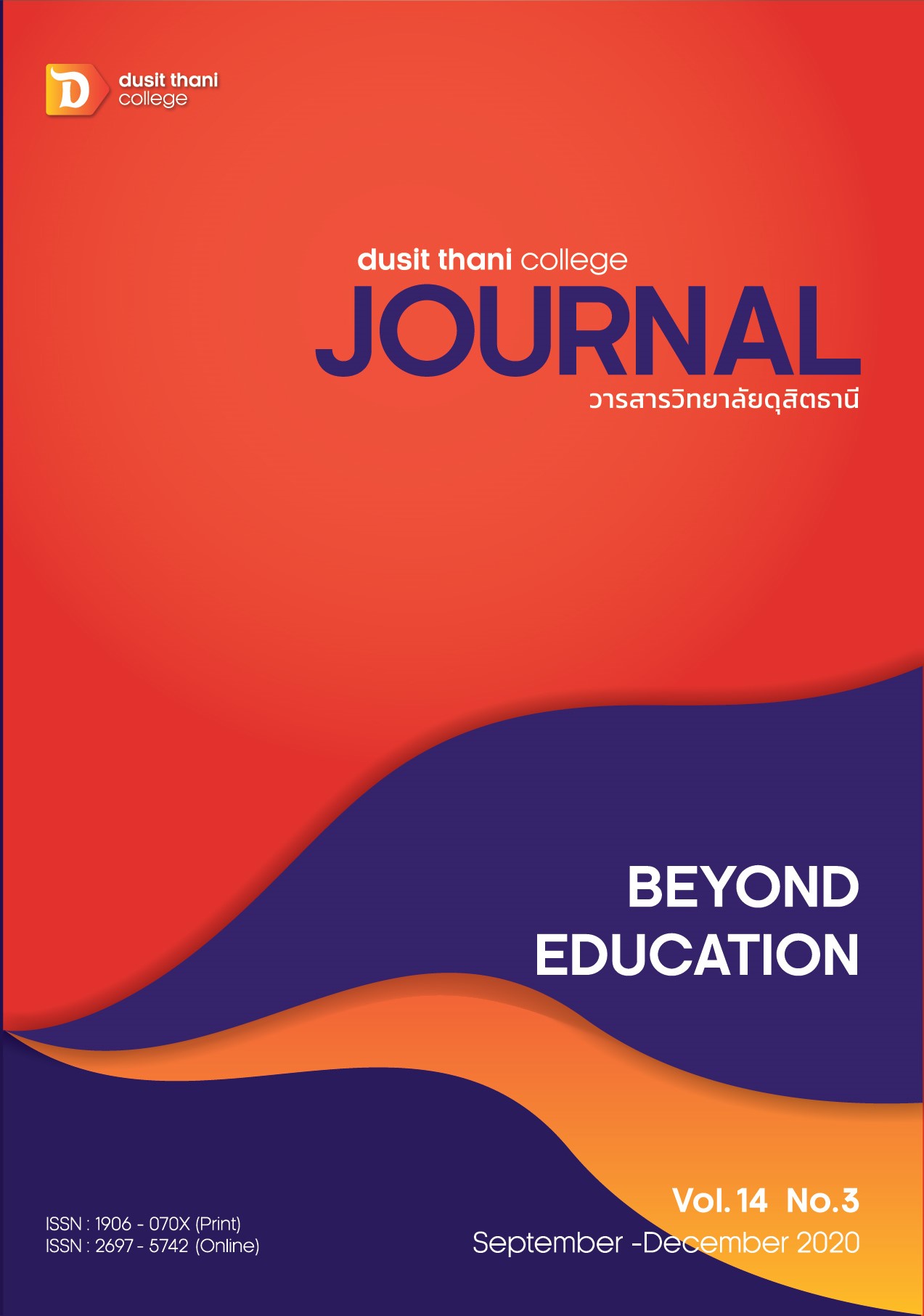Guidelines for the Development of Learning Management in the Arts of Vegetable and Fruit Carving Subjects Dusit Thani College, Pattaya
Main Article Content
Abstract
The purpose of this research was to study the satisfaction of students in learning management and study guidelines for the development of learning management in the Arts of Vegetable and Fruit Carving subjects at Dusit Thani College, Pattaya. This research was mix-method so-called Embedded-Correlational Design. The data was collected from 100 students and 10 students for an interview. The instruments were a questionnaire and interview that consisted of a content validity test and reliability test by Cronbach's alpha coefficient of the questionnaire which was .93 and included Investigator triangulation check and using descriptive statistics for analysis.
The results showed that demography did not affect the satisfaction of students in learning management. The satisfaction towards the instructor was at the highest level, followed by student characteristics and evaluation methods, with classroom management being at the lowest satisfaction level. Interview results yielded the same results of satisfaction and were consistent with the questionnaire. As a result of this research, guidelines for the development of learning management in the Arts of Vegetable and Fruit Carving subjects should be applied including teaching by working as a team, categorizing the difficulty of patterns and adjusting the content to be suitable for use in daily life.
Article Details
Article Screening Policy
- All research and academic articles to be published must be considered and screened by three peer reviews in the relevant field / article.
- All articles, texts, illustrations and tables published in the journal are the personal opinions of the authors. Editors don't always have to agree. And no responsibility whatsoever is the sole responsibility of the author.
- The articles to be published must never be published. Where did you first publish? And not in the consideration of other journals If the audit found that there has been a duplicate publication It is the sole responsibility of the author.
- Any article that the reader sees as being plagiarized or impersonated without reference. Or mislead the work of the author Please let the journal editor know it will be your greatest blessing.
References
Garnishing Subject of Home Economic Curriculum in Higher Education Institutions.
. Thesis Master of Education Chulalongkorn Univarsity.
Edmonds, W. A., & Kennedy, T. D. (2016). An applied guide to research designs:
Quantitative, qualitative, and mixed methods. Sage Publications.
Homsasen, H., Wongaree, S. & Sukumalpong, J. (2015). Student’s Opinion on
the Instructional Management of the Course on ‘Thinking and Decision-Making’
Udon Thani Rajabhat University. Nakhon Phanom University Journal, 5(3),7-15.
Jongkolklang, S. (2008). Team-Based Learning Model. Simajarn Journal, 21, 4386-4391.
LearningCentre – ChineseMenu. (2014). The Exquisite Art of Food Carving.
Retrieved from https://web.archive.org/web/20150520151452/http://arts.cultural-china.com/en/70Arts10617.html.
Maroun R. (2016). Learing Management in Higher Education Systems is Effective.
Journal of Southern Technology, 9(2), 169-176.
Michaelsen, L. K., Knight, A. B., & Fink, L. D. (2004). Team-based learning: A transformative
use of small groups in college teaching. VA: Stylus Pub.
Neol M. Meyers, DuncanD. Nulty, Bernard N. Cooke and John F. Rigby. (2002). Developing a learning environment that encourages deep learning outcomes. Paper presented at the Learning Communities and Assessment Cultures Conference organized by the EARLI Special Interest Group on Assessment And Evaluation. University of Northumbria.
Tapin, S., Honglattanaworatkit, S., Boonyarutkalin,Th., Deejai, P., & Phonphanpipa, S.
(2016).The Development of Video Program Commercial Carving to Access ASEAN. Research and Development Journal Suan Sunandha Rajabhat University, 8(1), 21-34.
Wachsuwan, A. (1978). Siamese Heritage. Bangkok: Phrae Phittaya International.
Wongratana, Ch. (1998). Technique use of statistics for research. Bangkok : Thapnimitkanpim.


